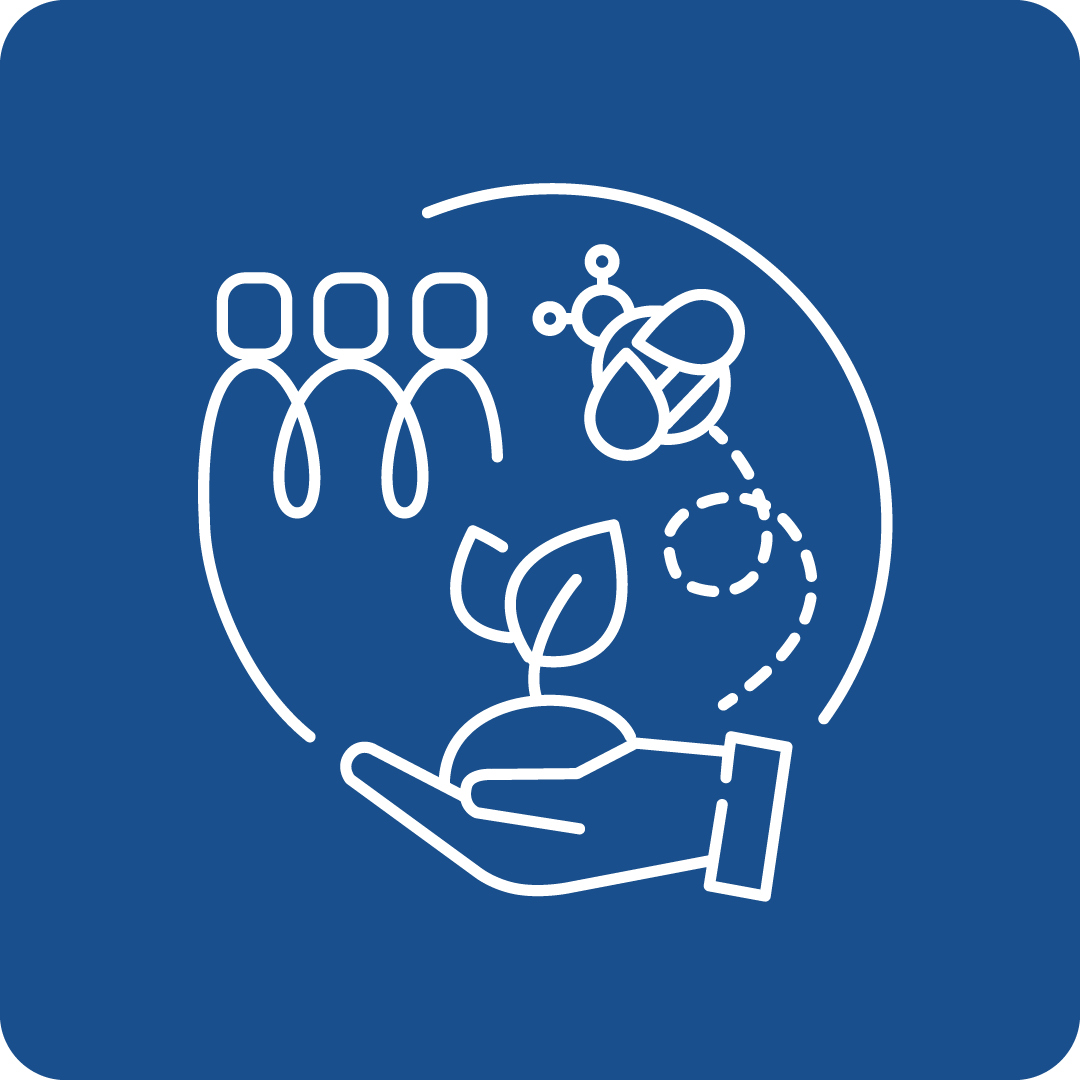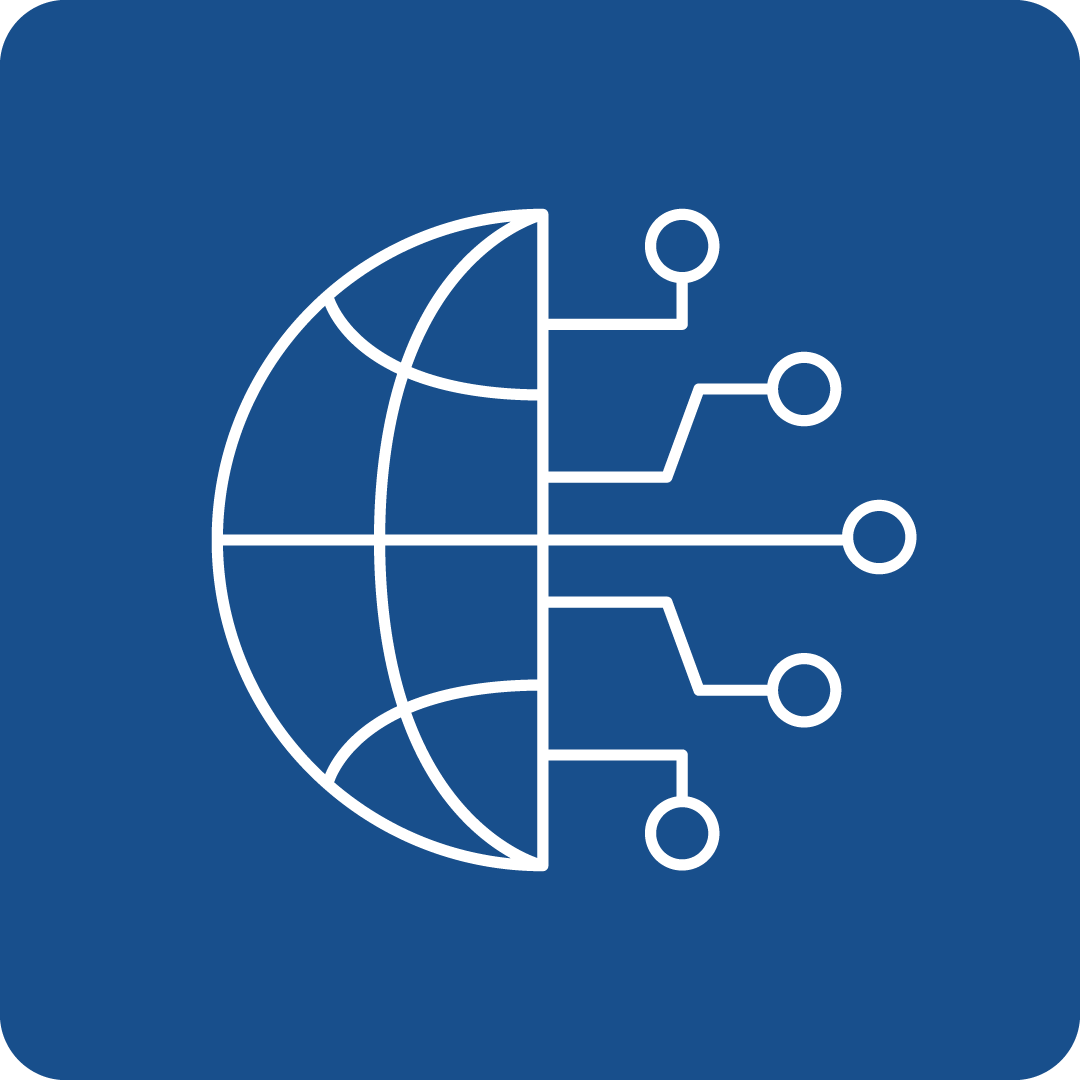Filter Search for grants
Call Navigation
Deadline expired
The deadline for this call has expired.
Call key data
Strengthening pathways to alternative socio-economic models for continuous improvement of biodiversity
Funding Program
Horizon Europe: Cluster 6 - Food, Bioeconomy, Natural Resources, Agriculture and Environment
Call number
HORIZON-CL6-2025-01-BIODIV-08
deadlines
Opening
06.05.2025
Deadline
17.09.2025 17:00
Funding rate
100%
Call budget
€ 14,000,000.00
Estimated EU contribution per project
€ 7,000,000.00
Link to the call
Link to the submission
Call content
short description
In line with the European Green Deal priorities providing for a fair and just green transition, in particular the EU biodiversity strategy for 2030 and the EU Nature Restoration Regulation, which contributes to the EU's objectives on climate adaptation and mitigation, as well as the Kunming-Montréal Global Biodiversity Framework (GBF), successful proposals will contribute to the impacts of this Destination, notably to grow understanding of the biodiversity crisis and ecosystem services, leading policymakers and society to recognise the importance of protecting and restoring biodiversity, driving a path towards transformative change.
Call objectives
The degradation of natural assets due to human activities, including climate change, emissions to air, water, and soil and land use intensification and change in Europe, and the subsequent cascading effects of biodiversity loss, have profound economic and social implications, including for our standards of living and immaterial aspects of quality of life. Biodiversity loss is increasingly recognised as a risk to macroeconomic and financial stability, affecting key institutions, countries and regions. Protecting and restoring ecosystems not only benefits biodiversity but also contributes to broader socio-economic objectives, such as human health and wellbeing, climate resilience, and particularly climate adaptation.
To address these trends, alternative socio-economic models can integrate biodiversity efforts into economic activities. The EU biodiversity strategy, GBF, and SDGs set ambitious biodiversity targets, but achieving them requires overcoming barriers in education, technology, society, economy, and governance. Numerous socio-economic models exist to achieve the necessary ecological, climate, economic, financial and social transition for biodiversity. These models need further analysis and development to be widely accepted and implementable. They play a key role in the transformative change called for by IPBES towards a nature positive society, for example through the deployment of nature-based solutions.
To contribute effectively to transformative change, it is crucial to deepen our understanding of the pathways to alternative socio-economic models. This includes better valuing the economic and social benefits that nature protection and restoration bring, beyond monetary valuation, and assessing the cost of inaction. Where possible, the actions should incorporate both quantitative and qualitative research, and the use of Generative AI could integrate new socio-economic data, aiding in model interpretation and action implementation.
read more
Expected effects and impacts
In particular, actions are expected to:
- analyse existing models: evaluate and prioritise existing alternative socio-economic models related to biodiversity protection and restoration, identifying best practices and assessing their impacts across Europe. This analysis should explore pathways for future development and implementation of these models, aiming to generate the most positive biodiversity outcomes, while also promoting climate resilience, social equity and community well-being;
- analyse barriers: Identify and propose solutions to overcome potential barriers and obstacles in scaling up the best available models. This includes considering the potential of Generative AI to enhance model implementation and effectiveness;
- identify gaps and build capacity: pinpoint gaps in current research, innovation, skills, education, legislation and technology. Propose capacity-building strategies to address these gaps, ensuring that the necessary infrastructure and knowledge are in place to support the widespread adoption of effective and fair socio-economic models;
- advance valuation methods: Build on previous research, notably incentive mechanisms and natural capital valuation methods (both monetary and non-monetary), to make progress towards standardised, widely accepted indicators. These indicators should reflect broader socio-economic, biodiversity and natural capital benefits as well as trade-offs. A reflexive use of valuation methods is encouraged, considering the ethical and social implications of different valuation approaches;
- develop and pilot strategies: using collaborative and participatory approaches, develop and pilot strategies, scenario methods, market and non-market measures, instruments, and approaches to scale-up the implementation of alternative socio-economic model.
- co-design pathways: work with stakeholders, including decision-makers, to co-design pathways towards the implementation of alternative socio-economic models. Develop innovative technologies and tools to support scenarios that capture the specificities of different ecosystems, ensuring that models are adaptable and responsive to the unique challenges faced by various regions and sectors.
- engage stakeholders: actively involve end-users such as policy and decision makers and citizens in the co-creation process. This could include the use of Generative AI-based tools to fully account for diverse views and needs, facilitating broader acceptance and application of the proposed models.
- disseminate knowledge: issue and disseminate recommendations, actionable knowledge and empowerment tools at European and possibly Member State levels. Explore synergies with other European initiatives, policies and strategies particularly those under the EU Green Deal, including various fiscal, financial and economic policies to help reach sustainability. Outcomes and findings should also be disseminated beyond the EU.
- investigate economic models: analyse how traditional economic models contribute to biodiversity loss, climate change and other socio-economic challenges, as well as the interactions between these challenges. Identify pragmatic actions and strategies to address these issues, considering the root causes of unsustainable practises, power imbalances and justice concerns.
Concretely, the project(s) should support the practical implementation of the EU biodiversity strategy and the GBF, providing evidence-based recommendations. Actions should build on synergies across multiple SDGs to deliver both direct and indirect biodiversity benefits, and leverage the knowledge compiled in IPBES assessment reports. Actions should consider ethical implications throughout project lifecycles, ensuring that outcomes align with broader societal values and contribute to equitable and just transitions. Actions should address specific challenges faced by different ecosystems, especially vulnerable ecosystems (e.g. agriculture, forestry) and communities (e.g. rural areas, those facing socio-economic inequalities).
Proposals should create synergies with other relevant initiatives, particularly Horizon 2020 and Horizon Europe projects, and foresee clustering activities, through the dedication of appropriate resources. Proposals should foresee cooperation with the EC Knowledge Centre for Biodiversity and the Science Service project BioAgora.
Proposals should involve contributions from the social sciences (including economics, sociology and educational science) and humanities (SSH) disciplines.
read more
Expected results
Project results are expected to contribute to all of the following expected outcomes:
- new knowledge to develop and accelerate pathways towards best available alternative socio-economic models that support biodiversity restoration and protection. These models should include adaptive legislative, governance, education and financing strategies, with potential applications of Generative AI to enhance research;
- decision makers (e.g. policy makers and public/private strategic decision makers) benefit from synthesised, systematised and prioritised knowledge on models that better integrate values of biodiversity and nature. Including valuation methods for assessing the benefits of restoration measures and the socio-economic distribution of impacts, tools and innovative market and governance instruments (e.g. potential incentives/capacity-building, including possible use of Generative AI-based tools), the application of environmental, social and ethical safeguards, and ensuring that biodiversity is continuously improved (e.g. through the non-deterioration principle) and to enhance community resilience to climate change;
- decision makers will have at their disposal information, tools, assessment strategies and metrics that allow for the continuous improved protection and restoration of biodiversity, alongside climate resilience, especially through enhanced climate adaptation. These should be integrated into socio-economic analytical frameworks, considering the quantitative and qualitative representation of social and economic variables in the short (up to 1 year), medium and long (5+ years) term, of the implications of applying such frameworks.
read more
Eligibility Criteria
Regions / countries for funding
Moldova (Moldova), Albania (Shqipëria), Armenia (Հայաստան), Bosnia and Herzegovina (Bosna i Hercegovina / Босна и Херцеговина), Canada, Faeroes (Føroyar / Færøerne), Georgia (საქართველო), Iceland (Ísland), Israel (ישראל / إِسْرَائِيل), Kosovo (Kosova/Kosovë / Косово), Montenegro (Црна Гора), New Zealand (Aotearoa), North Macedonia (Северна Македонија), Norway (Norge), Serbia (Srbija/Сpбија), Tunisia (تونس /Tūnis), Türkiye, Ukraine (Україна), United Kingdom
eligible entities
EU Body, Education and training institution, Non-Profit Organisation (NPO) / Non-Governmental Organisation (NGO), Other, Private institution, incl. private company (private for profit), Public Body (national, regional and local; incl. EGTCs), Research Institution incl. University, Small and medium-sized enterprise (SME)
Mandatory partnership
Yes
Project Partnership
To be eligible for funding, applicants must be established in one of the following countries:
- the Member States of the European Union, including their outermost regions
- the Overseas Countries and Territories (OCTs) linked to the Member States
- countries associated to Horizon Europe - see list of particpating countries
Only legal entities forming a consortium are eligible to participate in actions provided that the consortium includes, as beneficiaries, three legal entities independent from each other and each established in a different country as follows:
- at least one independent legal entity established in a Member State; and
- at least two other independent legal entities, each established in different Member States or Associated Countries.
Any legal entity, regardless of its place of establishment, including legal entities from non-associated third countries or international organisations (including international European research organisations) is eligible to participate (whether it is eligible for funding or not), provided that the conditions laid down in the Horizon Europe Regulation have been met, along with any other conditions laid down in the specific call topic.
A ‘legal entity’ means any natural or legal person created and recognised as such under national law, EU law or international law, which has legal personality and which may, acting in its own name, exercise rights and be subject to obligations, or an entity without legal personality.
other eligibility criteria
Specific cases:
- Affiliated entities (i.e. entities with a legal or capital link to a beneficiary which participate in the action with similar rights and obligations to the beneficiaries, but which do not sign the grant agreement and therefore do not become beneficiaries themselves) are allowed, if they are eligible for participation and funding.
- Associated partners (i.e. entities which participate in the action without signing the grant agreement, and without the right to charge costs or claim contributions) are allowed, subject to any conditions regarding associated partners set out in the specific call conditions.
- Entities which do not have legal personality under their national law may exceptionally participate, provided that their representatives have the capacity to undertake legal obligations on their behalf, and offer guarantees to protect the EU’s financial interests equivalent to those offered by legal persons.
- Legal entities created under EU law (EU bodies) including decentralised agencies may be part of the consortium, unless provided for otherwise in their basic act.
- International European research organisations are eligible to receive funding. International organisations with headquarters in a Member State or Associated Country are eligible to receive funding for ‘Training and mobility’ actions or when provided for in the specific call/topic conditions. Other international organisations are not eligible to receive funding, unless provided for in the specific call/topic conditions, or if their participation is considered essential for implementing the action by the granting authority.
- Joint Research Centre (JRC)— Where provided for in the specific call conditions, applicants may include in their proposals the possible contribution of the JRC but the JRC will not participate in the preparation and submission of the proposal. Applicants will indicate the contribution that the JRC could bring to the project based on the scope of the topic text. After the evaluation process, the JRC and the consortium selected for funding may come to an agreement on the specific terms of the participation of the JRC. If an agreement is found, the JRC may accede to the grant agreement as beneficiary requesting zero funding or participate as an associated partner, and would accede to the consortium as a member.
- Associations and interest groupings — Entities composed of members (e.g. European research infrastructure consortia (ERICs)) may participate as ‘sole beneficiaries’ or ‘beneficiaries without legal personality’. However, if the action is in practice implemented by the individual members, those members should also participate (either as beneficiaries or as affiliated entities, otherwise their costs will NOT be eligible.
- EU restrictive measures — Entities subject to EU restrictive measures under Article 29 of the Treaty on the European Union (TEU) and Article 215 of the Treaty on the Functioning of the EU (TFEU) as well as Article 75 TFEU, are not eligible to participate in any capacity, including as beneficiaries, affiliated entities, associated partners, third parties giving in-kind contributions, subcontractors or recipients of financial support to third parties (if any).
- Legal entities established in Russia, Belarus, or in non-government controlled territories of Ukraine — Given the illegal invasion of Ukraine by Russia and the involvement of Belarus, there is currently no appropriate context allowing the implementation of the actions foreseen in this programme with legal entities established in Russia, Belarus, or in non-government controlled territories of Ukraine. Therefore, even where such entities are not subject to EU restrictive measures, such legal entities are not eligible to participate in any capacity. This includes participation as beneficiaries, affiliated entities, associated partners, third parties giving in-kind contributions, subcontractors or recipients of financial support to third parties (if any). Exceptions may be granted on a case-by-case basis for justified reasons.
With specific regard to measures addressed to Russia, following the adoption of the Council Regulation (EU) 2024/1745 of 24 June 2024 (amending Council Regulation (EU) No 833/2014 of 31 July 2014) concerning restrictive measures in view of Russia’s actions destabilising the situation in Ukraine, legal entities established outside Russia but whose proprietary rights are directly or indirectly owned for more than 50% by a legal person, entity or body established in Russia are also not eligible to participate in any capacity. - Measures for the protection of the Union budget against breaches of the principles of the rule of law in Hungary — Following the Council Implementing Decision (EU) 2022/2506, as of 16 December 2022, no legal commitments can be entered into with Hungarian public interest trusts established under the Hungarian Act IX of 2021 or any entity they maintain. Affected entities may continue to apply to calls for proposals and can participate without receiving EU funding, as associated partners, if allowed by the call conditions. However, as long as the Council measures are not lifted, such entities are not eligible to participate in any funded role (beneficiaries, affiliated entities, subcontractors, recipients of financial support to third parties, etc.).In case of multi-beneficiary grant calls, applicants will be invited to remove or replace that entity in any funded role and/or to change its status into associated partner. Tasks and budget may be redistributed accordingly.
Additional information
Topics
Relevance for EU Macro-Region
EUSAIR - EU Strategy for the Adriatic and Ionian Region, EUSALP - EU Strategy for the Alpine Space, EUSBSR - EU Strategy for the Baltic Sea Region, EUSDR - EU Strategy for the Danube Region
UN Sustainable Development Goals (UN-SDGs)
![]()
![]()
![]()
Additional Information
Applications must be submitted electronically via the Funders & Tenders Portal electronic submission system (accessible via the topic page in the Search Funding & Tenders section). Paper submissions are NOT possible.
Applications must be submitted using the forms provided inside the electronic submission system (not the templates available on the topic page, which are only for information). The structure and presentation must correspond to the instructions given in the forms.
Applications must be complete and contain all parts and mandatory annexes and supporting documents.
The application form will have two parts:
- Part A (to be filled in directly online) contains administrative information about the applicant organisations (future coordinator and beneficiaries and affiliated entities), the summarised budget for the proposal and call-specific questions;
- Part B (to be downloaded from the Portal submission system, completed and then assembled and re-uploaded as a PDF in the system) contains the technical description of the project.
Annexes and supporting documents will be directly available in the submission system and must be uploaded as PDF files (or other formats allowed by the system).
The limit for a full application (Part B) is 45 pages.
Call documents
Horizon Europe Work Programme 2025 Cluster 6 - Food, Bioeconomy, Natural Resources, Agriculture and EnvironmentHorizon Europe Work Programme 2025 Cluster 6 - Food, Bioeconomy, Natural Resources, Agriculture and Environment(2474kB)
Contact
To see more information about this call, you can register for free here
or log in with an existing account.
Log in
Register now


